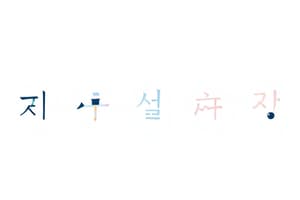Podcast
Questions and Answers
한국어에서 '2'의 의미는 무엇입니까?
한국어에서 '2'의 의미는 무엇입니까?
- 일 (il)
- 삼 (sam)
- 둘 (deul) (correct)
- 영 (yeong)
한국어 문장에서 주어-목적어 어순은 영어와 어떻게 다릅니까?
한국어 문장에서 주어-목적어 어순은 영어와 어떻게 다릅니까?
- 주어-목적어 순서가 반대로 됩니다. (correct)
- 주어-목적어 순서가 달라질 수도 있습니다.
- 주어-목적어 순서가 같습니다.
- 주어-목적어 관계가 없습니다.
'셋'이 몇을 나타내는지 고르십시오.
'셋'이 몇을 나타내는지 고르십시오.
- 3 (correct)
- 2
- 4
- 5
'일'이 한국어로 어떤 숫자를 의미합니까?
'일'이 한국어로 어떤 숫자를 의미합니까?
한국어에서 주제-주장 구조는 무엇을 먼저 언급합니까?
한국어에서 주제-주장 구조는 무엇을 먼저 언급합니까?
한글의 글자 수는 몇 개입니까?
한글의 글자 수는 몇 개입니까?
'안녕하세요'라는 인사말은 영어로 무엇입니까?
'안녕하세요'라는 인사말은 영어로 무엇입니까?
'감사합니다'라는 표현이 무슨 의미입니까?
'감사합니다'라는 표현이 무슨 의미입니까?
한국어에서 '먹고 싶어요'란 문장은 어떤 의미입니까?
한국어에서 '먹고 싶어요'란 문장은 어떤 의미입니까?
'어디에 있어요?'라는 문장의 의미는 무엇입니까?
'어디에 있어요?'라는 문장의 의미는 무엇입니까?
Flashcards are hidden until you start studying
Study Notes
Chapter 1: Beginner's Guide to Korean 1
Hangul Alphabet
Korean language uses a syllabic alphabet called Hangul or Hangeul, consisting of 24 letters: 10 vowels and 14 consonants. It's designed to be easy to learn and understand, as each character represents a specific sound. The best way to master Hangul is by associating them with English sounds, and many learners find success by starting with the vowels before moving on to the consonants.
Greetings and Introductions
Korean culture is deeply rooted in social etiquette, and greetings and introductions are no exception. A common greeting in Korean is "안녕하세요" (annyeonghaseyo), which translates to "hello" or "hi". When meeting someone new, it's polite to bow slightly, usually at a 30-degree angle. The depth of the bow depends on the person's rank or age, with deeper bows showing greater respect.
Basic Vocabulary
Learning basic Korean vocabulary is crucial for beginners. Some common phrases include "감사합니다" (gamsahamnida), which means "thank you", "어디에 있어요?" (eodeie isseoyo), which translates to "where is it?", and "먹고 싶어요" (meokkosipeoyo), which means "I'm hungry". Building a foundation in basic vocabulary will help you communicate more effectively in day-to-day situations.
Numbers and Counting
Korean numbers are similar to English numbers, but with unique characters. Learning the numbers 1-9 is a good starting point, as it will help you understand counting and cardinal numbers. For example, "1" in Korean is "일" (il), "2" is "둘" (deul), and "3" is "셋" (set). Once you have a grasp of numbers, you can move on to counting objects and understanding quantities.
Simple Grammar
Korean grammar is unique and different from English. One of the most important aspects to learn is subject-object word order, as it differs from the subject-verb-object order in English. Additionally, Korean language uses a topic-prominent structure, which means that the topic is mentioned first, followed by the comment. This structure is different from English and can take some time to get used to.
As you progress in your Korean learning journey, it's essential to practice regularly and consistently. Use resources like the Korean alphabet chart, audio materials, and language learning apps to reinforce your learning. Remember, every step you take brings you closer to fluency, so don't be discouraged if progress seems slow at first. Keep practicing and you'll soon find yourself making great strides in your Korean language journey.
Studying That Suits You
Use AI to generate personalized quizzes and flashcards to suit your learning preferences.




